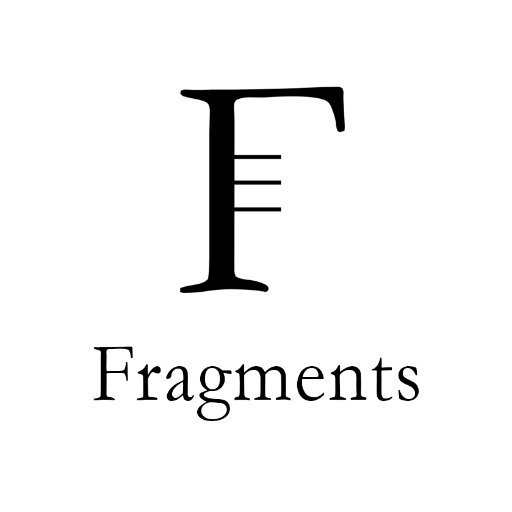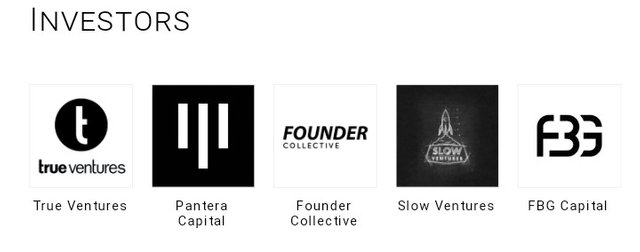Fragments: Review
Today, the significant burden of all digital money, including bitcoin, is the immense changes in volatilities. Fragment is a pleasant project created to take care of this issue.
From their whitepaper, Fragments label themselves like this: "Fragments is an algorithmic reserve and monetary supply policy for creating low volatility Ethereum Standard tokens, and our mission is to produce a fair and stable money for the world".

Fragments, discovered online at Fragments.org, needs to make a reasonable and stable cash for the world. The objective is to make a stablecoin that is better than existing stablecoins available – like Tether.
The Fragments venture rose up out of stealth mode on March 19, 2018. The organization has officially brought $3 million up in financing. Sections is driven by Pythagoras Pizza author Evan Kuo, who initially proposed Fragments as a token for the gig economy. Notwithstanding, the venture has since turned to make a stablecoin.
A remarkable aspect concerning Fragments is that it's a stablecoin – in spite of the fact that the estimation of the coin could increment after some time. That may sound opposing – so how about we investigate how Fragments functions.
How Does Fragments Work?
The Fragments convention balances out cost by moving unpredictability from unit cost to unit check. That may sound complex – yet it's not as mind boggling as you may think. At the point when the cost of the token goes up, the convention will naturally issue another digital currency called "parts".
A portion of those sections will enter the wallets of existing clients. A holder who bought one token and never sold that token would discover more tokens in their wallet after some time – regardless of whether they never made later buys.
Token discharges won't be dispersed only to wallet holders. They will likewise go into two stores, including one save that assets future improvement and another that purchases Ether (ETH). The ETH save is utilized when the supply of tokens needs to contract since costs are falling.
This makes a remarkable framework that empowers soundness while likewise enabling holders to win out over the competition. The estimation of a coin can never fall underneath zero – yet there's hypothetically no restriction to how much a coin could be worth.
Here's the manner by which the Fragments site clarifies it:
Standard Model (Today's System): You bought 1 BTC for $1 USD five years back and your 1 BTC is worth $10,000 now.
Stable Model (Fragments Model): You acquired 1 BTC at $1 USD five years back, yet today, you have 10,000 BTC with every unit worth $1.
As specified above, Fragments will balance out obtaining power by expanding and diminishing the supply of the token in light of interest:
At the point when the convention needs to build supply, it underwrites a save and after that parts, relatively dispersing tokens to wallets
At the point when the convention needs to diminish supply, the save naturally buys tokens and expels them from the supply in return for securities, which are the top priority to recapitalize the hold under development
This prompts a framework like Tether, where you have USD Tether and EUR Tether. Pieces will make USD Fragments, or USDF, among different resources.
Note that Fragments doesn't care to utilize the expression "stablecoin", and the undertaking doesn't sort itself as a stablecoin venture. Rather, Fragments call the coin a "low-instability digital money".
Section coins are ERC20 tokens on the Ethereum blockchain. They'll have an auditable save and an auditable supply arrangement.
Advantages Of Fragment
Piece underscores the majority of the accompanying advantages:
Spendable close term stockpiling, as $1 USD piece is constantly worth around $1 USD
Holdable long haul stockpiling, as holders are remunerated with expanded saves after some time; the estimation of every token stays generally the same, yet you have a developing number of tokens
A part money where expansion and emptying don't create additions or misfortunes for speculators, however financial specialists can encounter expanded or diminished buying influence
Uncorrelated with real coins; in the present cryptographic money markets, coins tend to rise and fall at the same time, yet Fragments will be inconsequential in light of the fact that dealers withdraw into stable monetary forms when digital money costs plunge, adding assorted variety to the biological community and enabling brokers to support
Utilize Cases For Fragments
A portion of the utilization cases for Fragments include:
Fill in as a medium of trade, satisfying similar needs Tether does today, enabling digital money clients to effectively move into a fiat-balanced out cash with an auditable on-chain hold and supply approach
A fence against different cryptographic forms of money, enabling dealers to withdraw into a low-unpredictability digital money to keep away from instability
An adjustment benefit for engineers, enabling designers to offer stable evaluating for items and administrations on the web (rather than offering an administration for 0.2 BTC today, just to have the cost vary uncontrollably after some time)
Fragments Asset Classes
Fragments intends to offer three resource classes, including an essential cost focused on resource, an auxiliary resource used to help strength, and an autonomous security resource held in the Fragment hold subsidize:
USD Fragments:
USD Fragments are value focused to the USD. At the point when request expands, the stage will settle cost by disseminating tokens to existing holders relatively.
USD Fragment Bonds:
USD Fragment Bonds are an auxiliary resource used to help the steadiness of USD Fragments. Bonds aren't cost focused on. They're principally utilized by the Fragment hold to encourage withdrawal. Each bond enables the holder to get a USD Fragment later on in return for expelling tokens from the present supply today.
Save Collateral Asset:
The Fragment save support holds ETH in a dynamic cushion to automatically buy tokens and expel them from the supply in return for USD Fragment Bonds in times when withdrawal is required.
Who's Behind Fragments?
Sections was helped to establish by Evan Kuo and Brandon Iles. Kuo is the organizer of Pythagoras Pizza, a pizza-on-request organization situated in San Francisco. Kuo first uncovered he was chipping away at the Fragments venture back in September 2017, despite the fact that they were initially imagined as tokens for the gig economy. Presently, the organization has turned to offer a stablecoin.
Iles, in the mean time, beforehand functioned as a specialist at Uber and as an individual from Google's Search group. The match are helped by Jessica Yen, who helped to establish Pythagoras Pizza with Evan and as of now works in Branding/Operations at Fragments.

Conclusion
Fragments plans to make a stablecoin – sorry, a "low instability digital currency" – that generally tracks the cost of the USD. Parts will make a framework like Tether by making "USD Fragments", or USDF. These advantages will be ERC20 tokens on the Ethereum blockchain. Sections will control the cost by extending or getting the supply of tokens.
It's a special and well thoroughly considered framework that could change the way we approach stablecoins. The undertaking left stealth mode on March 19, 2018.

To take in more about Fragments and how it functions, visit their website: https://www.fragments.org and
following useful links listed below
Telegram: http://t.me/FragmentsProtocol
Twitter: https://twitter.com/fragmentsorg
Compilled by Ericks1: [email protected]
Coins mentioned in post: